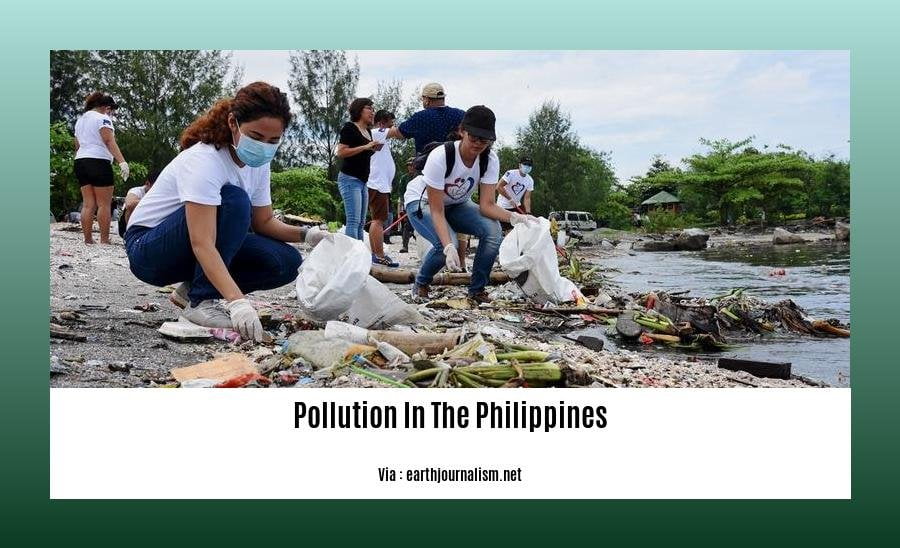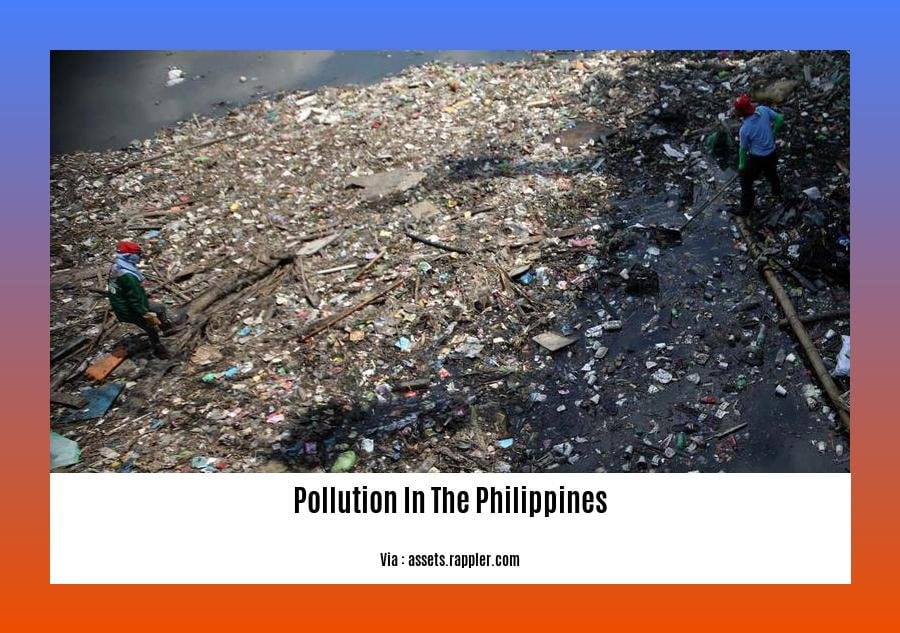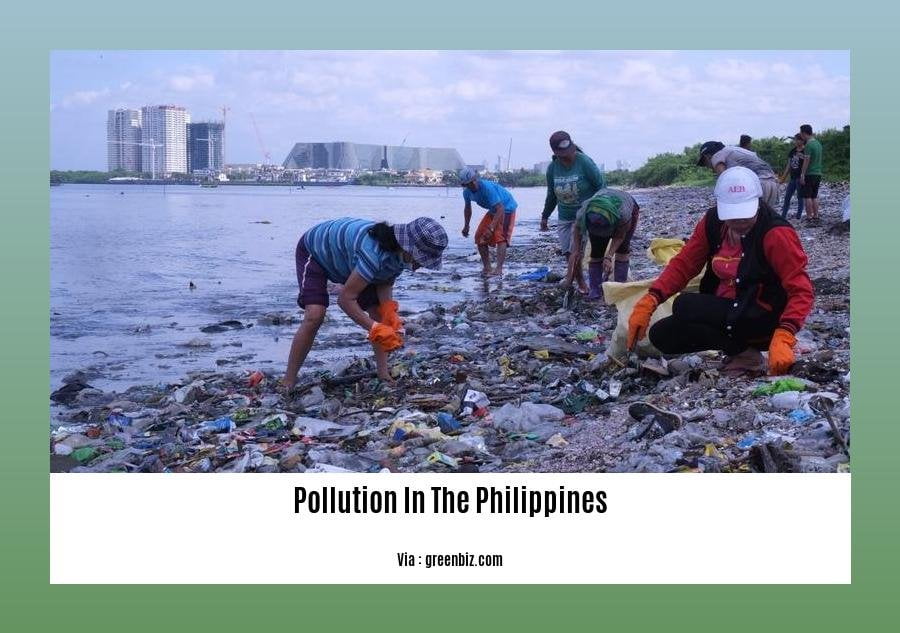Discovering the main causes of water pollution in the Philippines is crucial in safeguarding the country’s precious water resources. In this article, we delve into the complex factors behind this pressing issue. From industrial waste to improper waste management and agricultural runoff, we explore the sources of water pollution in the Philippines, highlighting the urgent need for sustainable solutions. By investigating and understanding these factors, we can pave the way for a cleaner and more sustainable future for the Philippines and its water resources.
Key Takeaways:
- Water pollution in the Philippines is a significant issue caused by various sources, including industrial wastewater, agricultural wastewater, and domestic sewage.
- Industrial wastewater contains harmful metals and chemicals that pose a threat to aquatic life and human health.
- Agricultural wastewater contains organic and non-organic pollutants that can contaminate water sources and lead to eutrophication.
- The lack of sufficient sewage treatment infrastructure results in only about 10 percent of sewage being properly treated, leading to the endangerment of human health and life.
- Oil spills, mine or chemical spills, and illegal dumping in or near water bodies are other sources of water pollution in the Philippines, severely damaging water quality and harming the environment.
- Proper waste management, government regulations, and sustainable agricultural practices are crucial for addressing water pollution in the Philippines.
- Borgen Magazine and Green Tumble are valuable sources for understanding the causes and implications of water pollution in the Philippines.
- Raising awareness and implementing measures to mitigate water pollution are necessary for the well-being of aquatic life, human health, and the environment.
Causes of Water Pollution in the Philippines

The Philippines faces significant challenges when it comes to water pollution. Understanding the causes of this issue is crucial for finding sustainable solutions that can protect our water resources for future generations. In this article, we will delve into the complex factors contributing to water pollution in the Philippines, focusing on industrial waste, improper waste management, and agricultural runoff.
Industrial Waste: A Major Culprit
Industrial wastewater is a significant contributor to water pollution in the Philippines. This wastewater often contains harmful metals such as lead, mercury, chromium, cadmium, and cyanide. These substances pose a grave threat to aquatic life and the health of people who rely on these water sources. The discharge of industrial waste into rivers and other bodies of water can have severe consequences for the ecosystem.
Improper Waste Management: A Hazardous Practice
Improper waste management practices exacerbate water pollution in the Philippines. Inadequate waste disposal and lack of proper treatment facilities mean that pollutants from various sources, including residential areas and industries, make their way into the water bodies. [Causes of water pollution in the Philippines] include untreated sewage, oil spills, mine or chemical spills, and illegal dumping. These activities directly impact water quality and harm the environment.
Agricultural Runoff: Pollutants from Farms
Another significant cause of water pollution in the Philippines is agricultural runoff. When excessive amounts of pesticides, fertilizers, and manure from livestock operations are carried away by rainwater or irrigation, they find their way into rivers and streams. This runoff carries organic and non-organic pollutants, such as decayed plants, dead animals, and soil runoff. These pollutants not only contaminate water sources but can also lead to eutrophication, causing algal blooms and disrupting the balance of aquatic ecosystems.
Looking for Solutions
Now that we have explored the causes of water pollution in the Philippines, it is essential to shift our focus toward sustainable solutions. Government regulations and policies play a crucial role in ensuring that industries adhere to proper waste disposal and treatment practices. Additionally, sustainable agricultural practices, such as organic farming, integrated pest management, and reducing chemical fertilizer use, can help minimize the impact of agricultural runoff.
Raising awareness and educating the public about the consequences of water pollution are also important steps in fighting this issue. By actively engaging in community initiatives and supporting organizations dedicated to water conservation, we can collectively work towards protecting our precious water resources.
In conclusion, [Causes of water pollution in the Philippines] can be attributed to various factors, including industrial waste, improper waste management, and agricultural runoff. Understanding these causes is the first step towards implementing effective solutions. By prioritizing sustainable practices and fostering an environment of environmental responsibility, we can ensure a healthier future for our water resources.
Water pollution in Zambia is a pressing issue that needs immediate attention. Check out the causes of water pollution in Zambia to understand the extent of the problem and how it affects the environment. Causes of water pollution in Zambia
Enumerating the Sources of Water Pollution in the Philippines

Water pollution in the Philippines is a critical issue that arises from various sources, including industrial waste, improper waste management, and agricultural runoff. Understanding and addressing these causes are essential for the long-term sustainability and preservation of the country’s water resources.
Industrial Waste: A Significant Contributor to Water Pollution
One of the major culprits in water pollution is industrial waste. This waste contains harmful substances like lead, mercury, chromium, cadmium, and cyanide, which not only pose a threat to aquatic life but also endanger human health. When discharged into water bodies, these toxic metals contaminate the water and disrupt the delicate balance of aquatic ecosystems.
Upon closer examination, it becomes evident that industries play a substantial role in contributing to water pollution. The discharge of industrial effluents, often containing these hazardous substances, directly into water bodies leads to pollution on a large scale. For instance, factories that produce chemicals, textiles, and electronic goods may release these harmful substances during their manufacturing processes. Consequently, these substances find their way into rivers, lakes, and oceans, resulting in persistent water pollution.
Improper Waste Management: A Trigger for Water Contamination
Improper waste management practices exacerbate water pollution in the Philippines. Inadequate disposal methods, such as open dumping or unregulated landfills, allow pollutants to seep into the ground and contaminate groundwater sources. As a result, these contaminants can eventually find their way into rivers and other bodies of water.
Further exacerbating the issue is the lack of proper waste treatment facilities. Domestically generated sewage, for example, contains pathogens and bacteria that can pose significant health risks if it is discharged into water bodies without proper treatment. Unfortunately, the limited capacity of sewage treatment infrastructure in the country only allows for about 10 percent of sewage to be adequately treated. This means that a large portion of domestic sewage, laden with potentially harmful organisms, ends up polluting water sources.
Agricultural Runoff: A Silent Contributor
Agricultural practices in the Philippines contribute to water pollution through the phenomenon known as agricultural runoff. This occurs when excess fertilizers, pesticides, and organic matter are washed away from agricultural fields and enter nearby water bodies. The runoff carries these pollutants, including decayed plants, dead animals, livestock manure, and chemicals, directly into water sources.
The issue of agricultural runoff is further compounded by soil erosion resulting from unsustainable farming practices. When soil erodes, it carries sediment and contaminants into nearby water bodies, degrading water quality and contributing to the pollution problem.
Other Sources of Water Pollution
Aside from industrial waste, improper waste management, and agricultural runoff, there are other sources of water pollution in the Philippines. Oil spills, for example, have the potential to cause severe damage to marine ecosystems and water quality. Similarly, mine or chemical spills can introduce toxic substances into water bodies, creating immediate and long-term pollution concerns. Additionally, illegal dumping in or near water bodies is a pervasive issue, as it directly introduces pollutants into the environment.
The Effects and Implications of Water Pollution
Water pollution in the Philippines has significant effects on biodiversity, particularly in the country’s biodiversity hotspots. The delicate balance of intricate ecosystems, home to numerous plant and animal species, is disrupted when water pollution occurs. This disruption not only threatens the survival of these species but also undermines the ecological services that they provide. Biodiversity loss and ecosystem degradation have far-reaching consequences for the health and well-being of communities relying on these ecosystems for resources and livelihoods.
Key Takeaways:
- Industrial waste, improper waste management, and agricultural runoff are the main sources of water pollution in the Philippines.
- Industrial waste contains toxic metals, contributing to water contamination and endangering aquatic life and human health.
- Improper waste management practices, including insufficient sewage treatment infrastructure, lead to the discharge of untreated domestic sewage into water bodies, posing risks to human health.
- Agricultural runoff carries pollutants from fertilizers, pesticides, and organic material into nearby water bodies.
- Other sources of water pollution include oil spills, mine or chemical spills, and illegal dumping.
- Water pollution in the Philippines has significant implications for biodiversity and ecosystem health.
- Government regulations, improved waste management, and sustainable agricultural practices are essential for preventing water pollution and preserving water quality in the Philippines.
FAQ
Q1: What are the main causes of water pollution in the Philippines?
A1: The main causes of water pollution in the Philippines include industrial waste, agricultural runoff, domestic sewage, oil spills, mine or chemical spills, and illegal dumping.
Q2: What are the sources of water pollution in the Philippines?
A2: The sources of water pollution in the Philippines are industrial wastewater, agricultural wastewater, domestic sewage, oil spills, mine or chemical spills, and illegal dumping in or near water bodies.
Q3: Can you enumerate the sources of water pollution in the Philippines?
A3: Yes, the sources of water pollution in the Philippines include industrial waste, agricultural runoff, domestic sewage, oil spills, mine or chemical spills, and illegal dumping.
Q4: How does industrial waste contribute to water pollution in the Philippines?
A4: Industrial waste contributes to water pollution in the Philippines through the discharge of toxic metals like lead, mercury, chromium, cadmium, and cyanide into water bodies.
Q5: What are the implications of water pollution in the Philippines?
A5: Water pollution in the Philippines has significant effects on biodiversity, threatening the country’s biodiversity hotspots. It also poses risks to human health and life, as contaminated water sources may contain pathogens and pollutants harmful to humans.












